Harishyam Arts Blog
Which Wood is Best for Home Mandir?
By Lakshay Sharma | On 05 October, 2025 | Views
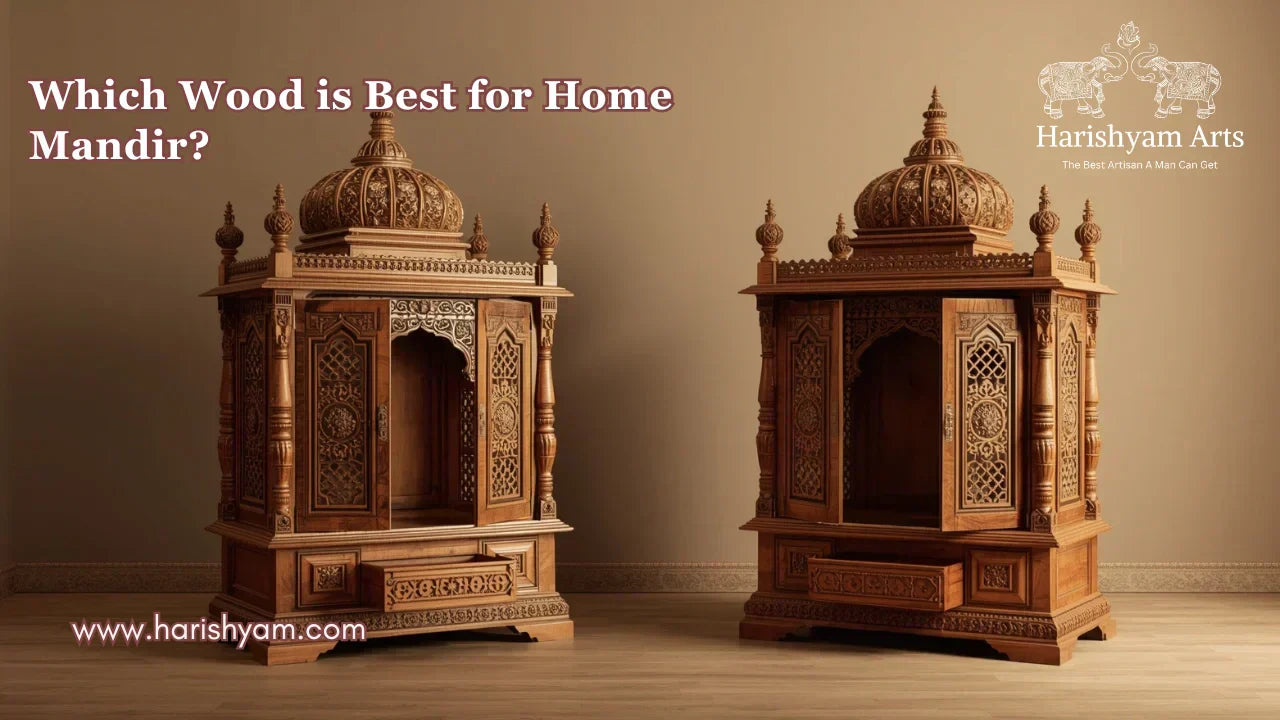
A home mandir is not just a piece of furniture; it is the spiritual heart of your home. The type of wood used plays a major role in its durability, look, and positive energy. At Harishyam Arts, you can explore beautifully handcrafted wooden mandirs and idols that combine tradition with fine artistry. If you are planning to bring home a wooden mandir, let’s explore which wood is best and why.
Importance of Choosing the Right Wood for Mandir
Wood has been considered sacred in Indian tradition since ancient times. From temple doors to idols, carefully chosen wood enhances the spiritual aura. A mandir made of strong, high-quality wood:
-
Ensures long life and resistance to termites.
-
Adds natural beauty to your pooja room.
-
Aligns with Vastu Shastra, attracting positivity.
-
Reflects devotion through fine craftsmanship.
Best Types of Wood for Home Mandir
1. Teak Wood (Sagwan)
Teak wood is one of the most popular and premium options for mandirs.
-
Known for its golden-brown color and natural oils.
-
Resistant to termites, decay, and moisture.
-
Gives a royal, long-lasting appearance.
If you want a mandir that lasts for generations, teak wood is an excellent choice. Browse our Teak Wood Mandir Designs for premium options.
2. Sheesham Wood (Indian Rosewood)
Sheesham is another strong and durable wood commonly used in Indian furniture and temples.
-
Rich natural grains add elegance.
-
Heavy and robust, making it perfect for large mandirs.
-
More affordable than teak but equally graceful.
A Sheesham wood mandir adds traditional charm to any home. See our Sheesham Wood Mandirs for handcrafted designs.
3. Mango Wood
Eco-friendly and versatile, mango wood has become a favorite for carved mandirs.
-
Lightweight yet durable.
-
Easy to carve, making it perfect for intricate designs.
-
More budget-friendly than teak and rosewood.
If you want a stylish mandir without stretching your budget, mango wood is a great pick. View our Mango Wood Mandirs for unique styles.
4. Rosewood
Rosewood is considered an auspicious wood for temples.
-
Deep reddish-brown hue gives a luxurious finish.
-
Highly durable and termite-resistant.
-
Preferred for intricate carvings and detailed designs.
Though slightly expensive, rosewood mandirs look divine and majestic. Explore Rosewood Mandirs crafted with devotion.
5. Other Sacred Options
-
Neem Wood: Considered highly auspicious in Hinduism. Its antibacterial properties also make it a natural choice.
-
Ashoka Wood: Symbol of purity and positivity.
-
Pine Wood: Lightweight and affordable, though not as durable as hardwoods.
Vastu Tips for Wooden Mandir
According to Vastu Shastra, the right material and placement of a mandir invite peace and prosperity.
-
Use natural wood only; avoid particle boards or artificial woods.
-
Always keep the mandir clean and polished.
-
The best direction for a mandir is North-East (Ishan Kona).
-
Avoid placing the mandir directly on the floor; use a wooden stand or platform.
How to Maintain a Wooden Mandir
A little care will keep your wooden mandir shining for years:
-
Dust daily and polish periodically with natural oils.
-
Keep away from damp corners to avoid damage.
-
Use soft cotton cloth for cleaning delicate carvings.
-
Apply termite-resistant coating once every few years.
FAQs
Q1. Which wood is best for mandir as per Vastu?
Ans: According to Vastu Shastra, Teak Wood and Sheesham Wood are considered the best woods for mandirs. Teak is highly auspicious, durable, and believed to attract prosperity, while Sheesham is known for its strength and elegance.
Q2. Which mandir is good for home – wooden or marble?
Ans: Both wooden and marble mandirs are considered good for home.
-
A Wooden Mandir, especially in teak, is preferred for its Vastu benefits, warmth, and traditional aura.
-
A Marble Mandir adds purity, elegance, and a cooling effect, often preferred for larger pooja rooms.
👉 If you want a sacred, long-lasting option, both wood and marble are auspicious. The choice depends on your home space and preference.
Q3. What is the best material for mandir at home as per Vastu?
Ans: per Vastu, natural materials like teak wood, rosewood, and marble are the best choices. Wood represents warmth, devotion, and longevity, while marble symbolizes purity, divinity, and peace. Avoid artificial materials or metals for the main mandir structure.
Q4. Why is teak wood considered best for home mandir?
Ans: Teak wood is durable, termite-resistant, and Vastu-friendly. Its golden-brown grains add a sacred look, making it the most auspicious choice for mandirs.
Q5. Can we use mango wood for mandir?
Ans: Yes, mango wood is eco-friendly and budget-friendly. It is often used for intricately carved mandirs but is less durable compared to teak.
Q6. Can I get a wooden mandir delivered outside India?
Ans : Yes! At Harishyam Arts, we deliver handcrafted wooden mandirs worldwide, including the USA, UK, Canada, and other countries. Our export-quality packaging ensures safe delivery of your mandir to your doorstep, no matter where you are.Also Read: How to Clean Wooden Mandir at Home
A home mandir is not just a piece of furniture; it is the spiritual heart of your home. The type of wood used plays a major role in its durability, look, and positive energy. At Harishyam Arts, you can explore beautifully handcrafted wooden mandirs and idols that combine tradition...

Lakshay Sharma
I’m Lakshay Sharma, a writer with a deep passion for Hindu mythology, Vastu Shastra, and home interiors. I enjoy exploring the rich traditions of Hindu gods and goddesses, sharing insights into Vastu principles, and offering guidance on creating sacred spaces like Puja Mandirs. Through my writing, I aim to inspire harmony and spiritual well-being, blending traditional knowledge with modern perspectives.
Harishyam Arts | Jaipur
Related Blogs

Benefits of Choosing Corian Mandirs Over Marble and Wood
Lakshay Sharma | November 14, 2025
Modern homes today demand elegance, functionality, and easy upkeep — and Coria...
Read More...
White vs. Black Shivling: Which One Is Best for Your Home and Why?
Lakshay Sharma | November 13, 2025
The Shivling, a sacred symbol of Lord Shiva, embodies creation, power, and pur...
Read More...
10 Stunning Marble Handicraft Pieces to Elevate Your Home Décor
Lakshay Sharma | November 12, 2025
Marble handicrafts represent timeless artistry, luxury, and devotion. At Haris...
Read More...
Brass Ganesha Idols as Gifts: Symbolism, Occasions, and Gifting Etiquette
Lakshay Sharma | November 11, 2025
Gifting a brass Ganesha idol is more than a gesture—it's a blessing of prosper...
Read More...
Luxury Kids Room Decor Ideas That Turn Every Space Into a Fairytale Dream
Lakshay Sharma | November 10, 2025
Transforming a child’s room into a luxury fairytale dream combines comfort wit...
Read More...
Why Repainting Your Marble Statue Can Extend Its Life and Beauty
Lakshay Sharma | November 09, 2025
Marble statues are elegant pieces of art that add charm to any home or temple....
Read More...
How to Choose the Perfect Wall-Mounted Wooden Mandir for Your Home
Lakshay Sharma | November 08, 2025
A wall-mounted wooden mandir is more than just a spiritual corner; it’s a blen...
Read More...
Understanding GST on Marble God Statues: A Complete Guide for Buyers and Sellers
Lakshay Sharma | November 07, 2025
Marble god statues are a popular choice for temples, homes, and offices due to...
Read More...
Are Wooden Statues Pest-Resistant? How to Protect Your Wooden Idols from Insects and Damage
Lakshay Sharma | November 06, 2025
Wooden statues have been cherished for centuries due to their natural beauty a...
Read More...
Corian vs Wooden Temples: Which One Should You Choose?
Lakshay Sharma | November 05, 2025
Choosing the perfect temple for your home is more than just selecting a design...
Read More...
How Customised Marble Human Bust Manufacturers Bring Personalities to Life
Lakshay Sharma | November 04, 2025
Crafting a marble human bust is so much more than sculpting a likeness—it's ab...
Read More...
The Power of the Hare Krishna Maha Mantra: Awakening Spiritual Bliss
Lakshay Sharma | November 03, 2025
The Hare Krishna Maha Mantra is a sacred chant that ...
Read More...
The 24 Tirthankaras of Jainism: Names, Symbols, and Significance
Lakshay Sharma | November 02, 2025
In Jainism, the Tirthankaras are revered as divine s...
Read More...
Top 25 Space-Saving Wooden Mandir Ideas for Modern Homes
Lakshay Sharma | November 01, 2025
A pooja mandir is the heart of every Indian home — a sacred corner where peace...
Read More...
What Are the 8 Forms of Lakshmi? | Ashta Lakshmi Meaning and Significance
Lakshay Sharma | October 31, 2025
The Divine Essence of Goddess Lakshmi
Goddess La...
Read More...
The Art of Craftsmanship: How Handmade Brass Statues Are Created
Lakshay Sharma | October 30, 2025
At Harishyam Arts, we celebrate the timeless beauty ...
Read More...
How to Dispose of Broken Marble God Murti
Lakshay Sharma | October 30, 2025
In Hindu tradition, marble murtis represent divine presence and spiritual ener...
Read More...
Wooden Statues vs Marble Statues: Which One Should You Choose?
Lakshay Sharma | October 29, 2025
When it comes to decorating your home or creating a sacred space, choosing the...
Read More...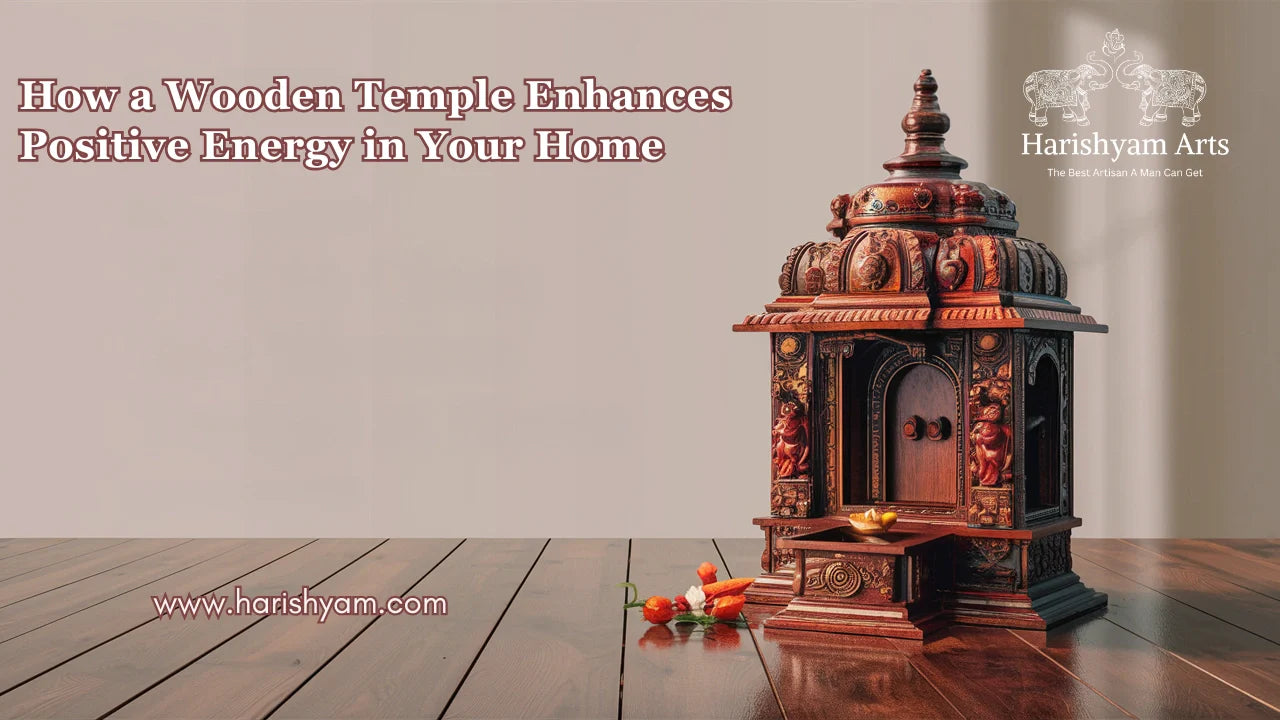
How a Wooden Temple Enhances Positive Energy in Your Home
Lakshay Sharma | October 28, 2025
A home temple isn’t just a decorative corner — it’s the spiritual...
Read More...
Why Lord Krishna is Worshipped in Different Forms Across India
Lakshay Sharma | October 27, 2025
Lord Krishna — the eighth incarnation of Lord Vishnu — is one of the most belo...
Read More...
The Story of Goddess Saraswati: The Embodiment of Wisdom and Knowledge
Lakshay Sharma | October 26, 2025
Among the many deities of the Hindu pantheon, Maa Saraswati Read More...

Top Reasons to Choose Brass Statues for Home Décor and Spiritual Spaces
Lakshay Sharma | October 25, 2025
Home décor today is not only about beauty—it’s about creating a peaceful and m...
Read More...
How long do Corian temples last?
Lakshay Sharma | October 24, 2025
Choosing the right material for a temple at home is important for both aesthet...
Read More...
Why Lord Shiva is Called the Mahadeva – The Supreme God
Lakshay Sharma | October 23, 2025
Hinduism, one of the world’s oldest religions, has a rich pantheon of deities,...
Read More...
Why Corian Temples Are Becoming Popular in Contemporary Homes
Lakshay Sharma | October 22, 2025
In today’s modern homes, interior décor blends tradition with contemporary sty...
Read More...
Dome or No Dome? Choosing the Right Design for Your Home Temple
Lakshay Sharma | October 21, 2025
Creating a sacred space at home is a spiritual investment, and the design of y...
Read More...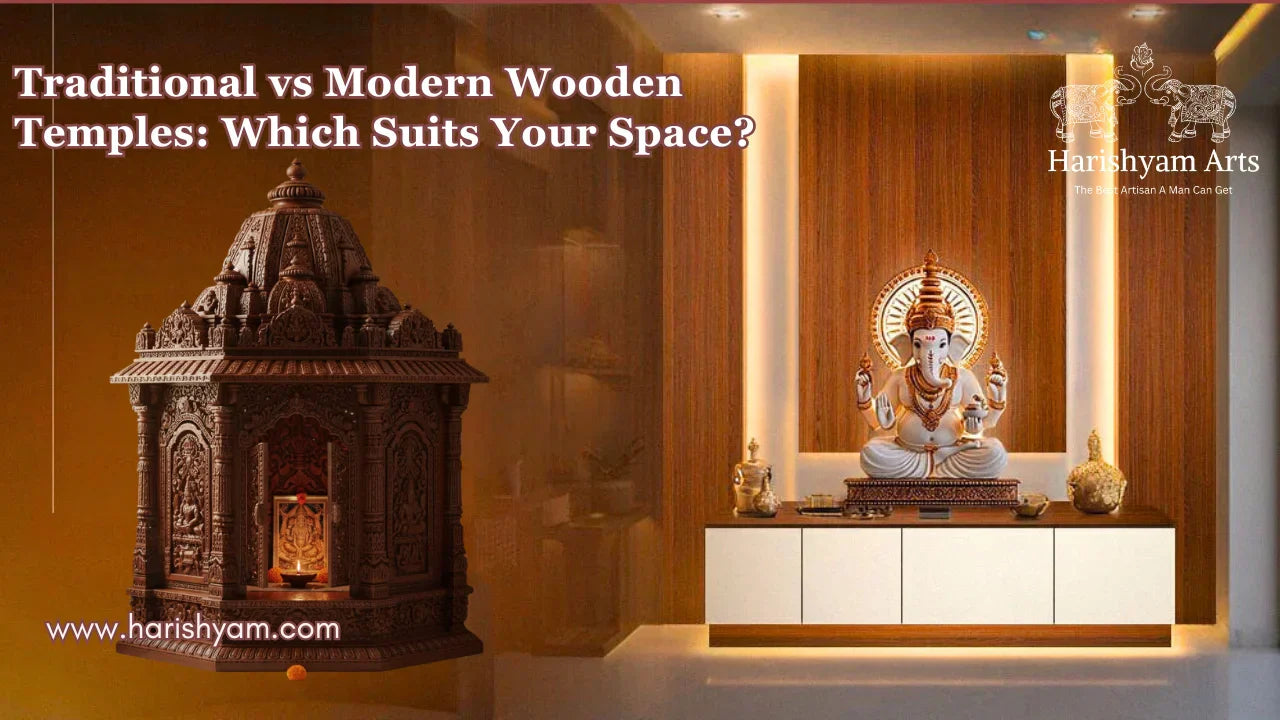
Traditional vs Modern Wooden Temples: Which Suits Your Space?
Lakshay Sharma | October 20, 2025
Creating a sacred space in your home is more than just interior décor — it’s a...
Read More...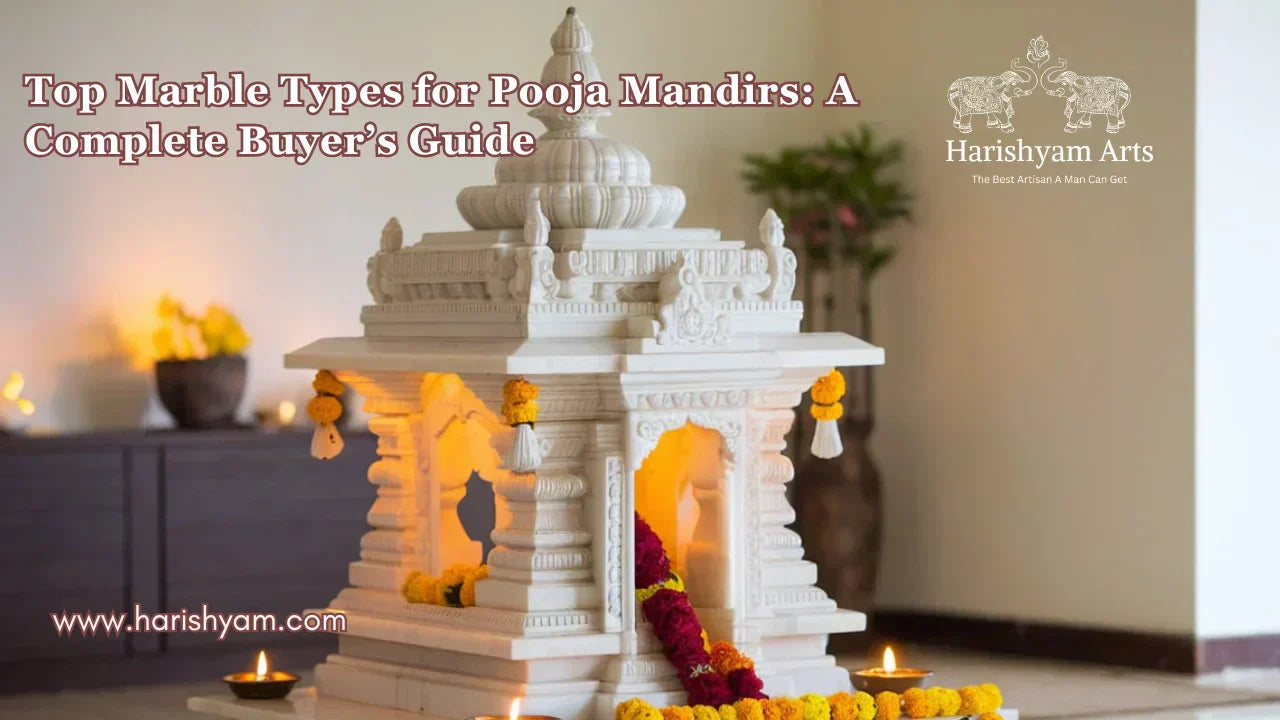
Top Marble Types for Pooja Mandirs: A Complete Buyer’s Guide
Lakshay Sharma | October 19, 2025
A Pooja Mandir is more than just furniture; it is th...
Read More...
The Different Forms of Shiva Statues and their Symbolism
Lakshay Sharma | October 18, 2025
Introduction to the God Shiva Statue
Lord Shiv...
Read More...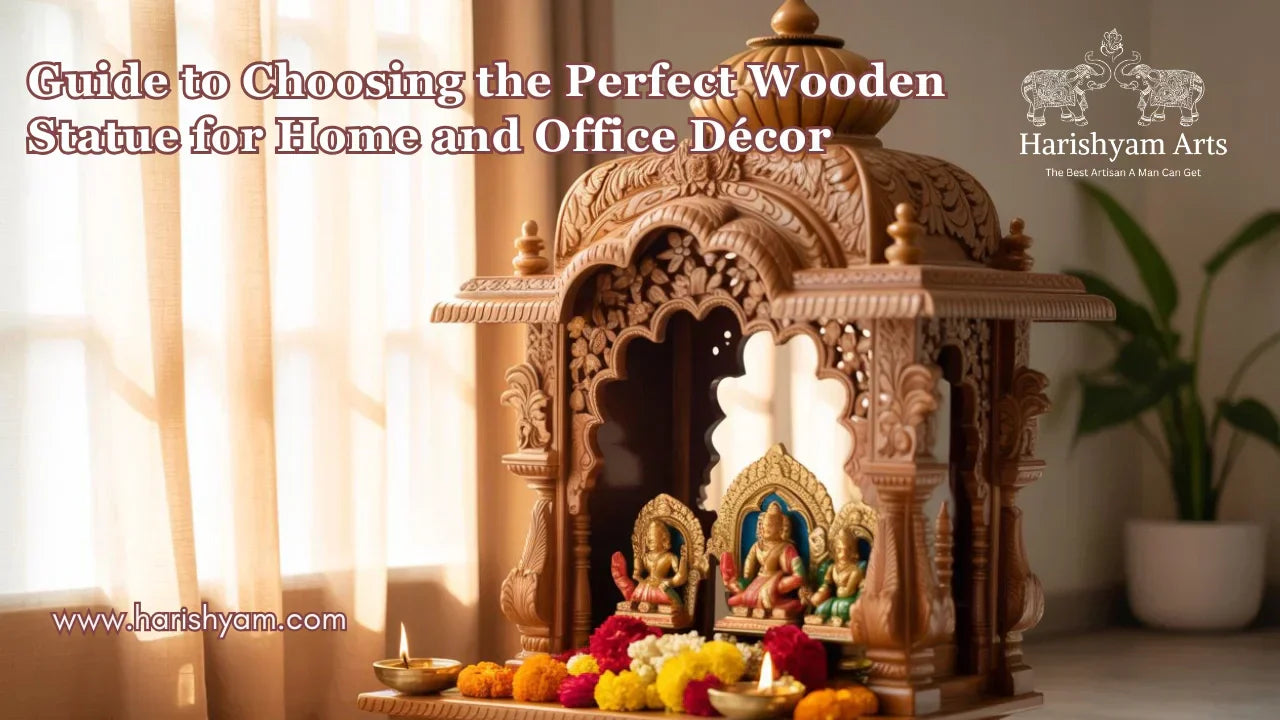
Guide to Choosing the Perfect Wooden Statue for Home and Office Décor
Lakshay Sharma | October 17, 2025
Wooden statues are more than decorative pieces—they are timeless symbols of ar...
Read More...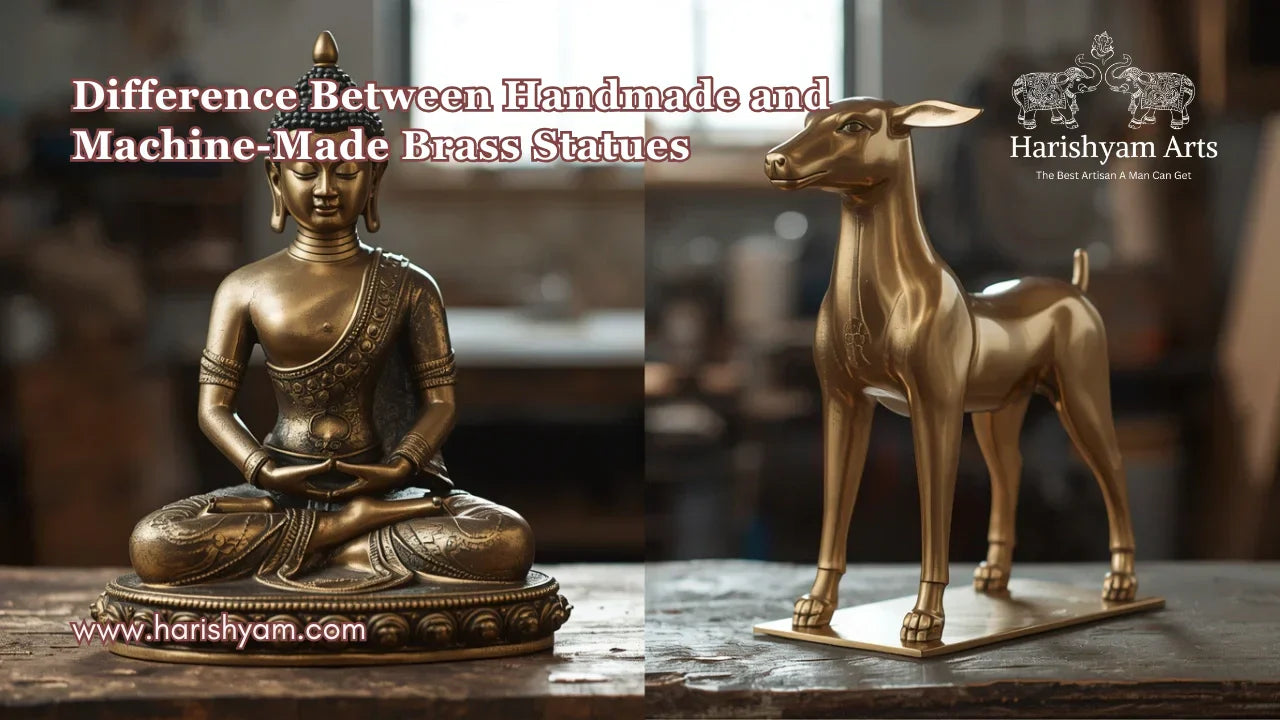
Understanding the Difference Between Handmade and Machine-Made Brass Statues
Lakshay Sharma | October 16, 2025
Brass statues have been a cornerstone of spiritual and decorative art for cent...
Read More...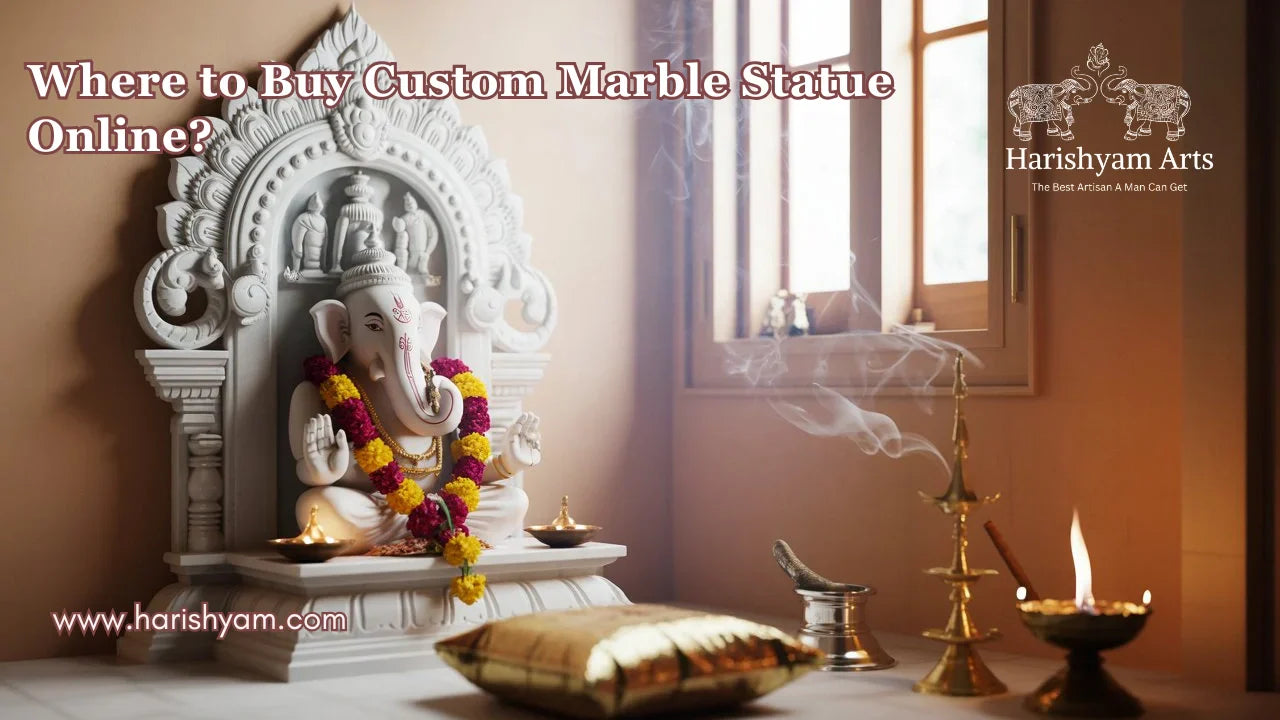
Where to Buy Custom Marble Statue Online? A Complete Guide
Lakshay Sharma | October 15, 2025
Marble statues have always held a special place in Indian homes and temples. T...
Read More...
Mistakes You Shouldn’t Make When Purchasing a Home Temple Online
Lakshay Sharma | October 14, 2025
Buying a home temple online can be an exciting experience — especially with so...
Read More...
Mistakes You Shouldn’t Make When Purchasing a Home Temple Online
Lakshay Sharma | October 14, 2025
Buying a home temple online can be an exciting experience — especially with so...
Read More...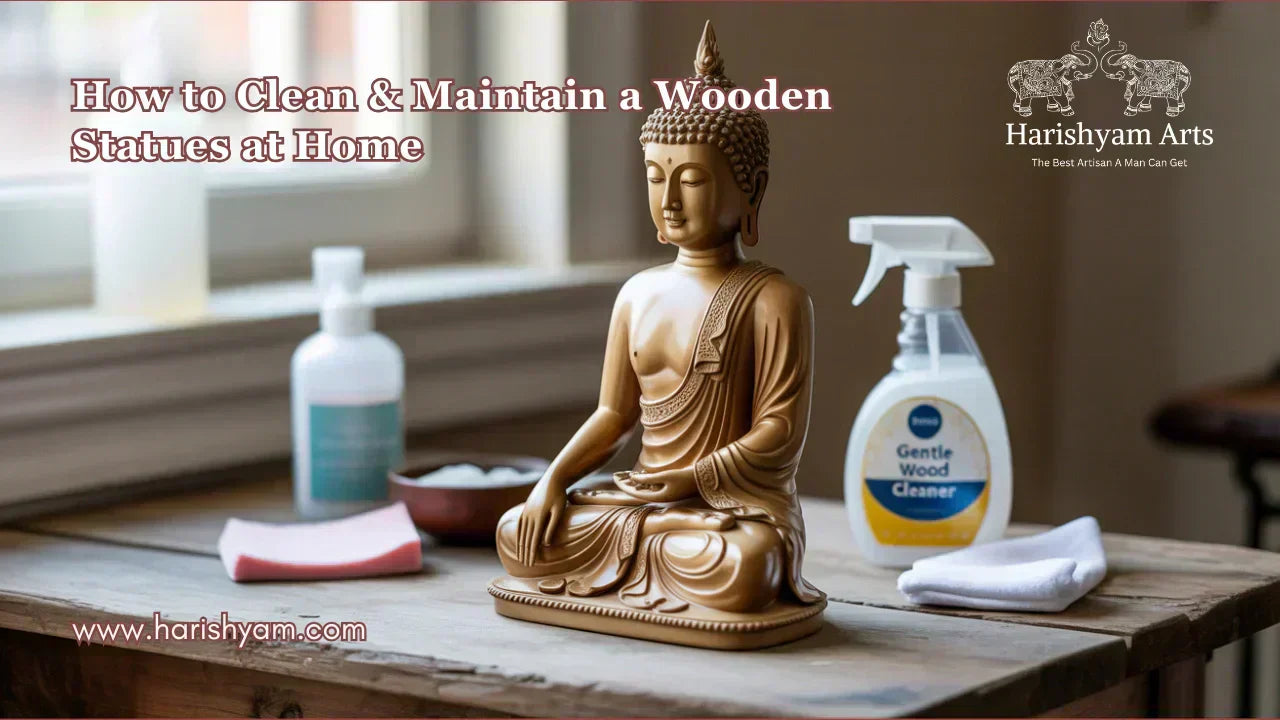
How to Clean and Maintain Wooden Statues at Home
Lakshay Sharma | October 13, 2025
Wooden statues add elegance, tradition, and warmth to any home. From intricate...
Read More...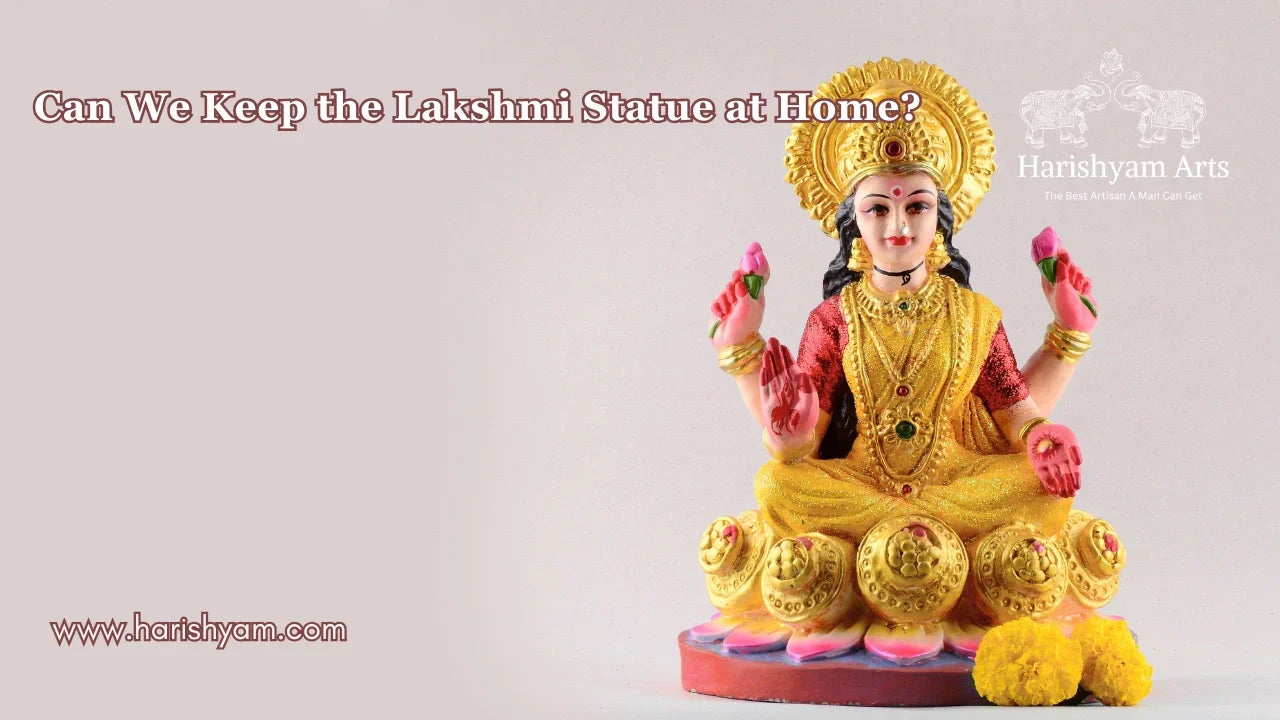
Can We Keep the Lakshmi Statue at Home?
Lakshay Sharma | October 13, 2025
In Hindu tradition, Goddess Lakshmi is worshipped as the divine force of wealt...
Read More...
How to Clean Brass Statues at Home?
Lakshay Sharma | October 12, 2025
Brass statues add a touch of elegance and spirituality to any home. At Harishy...
Read More...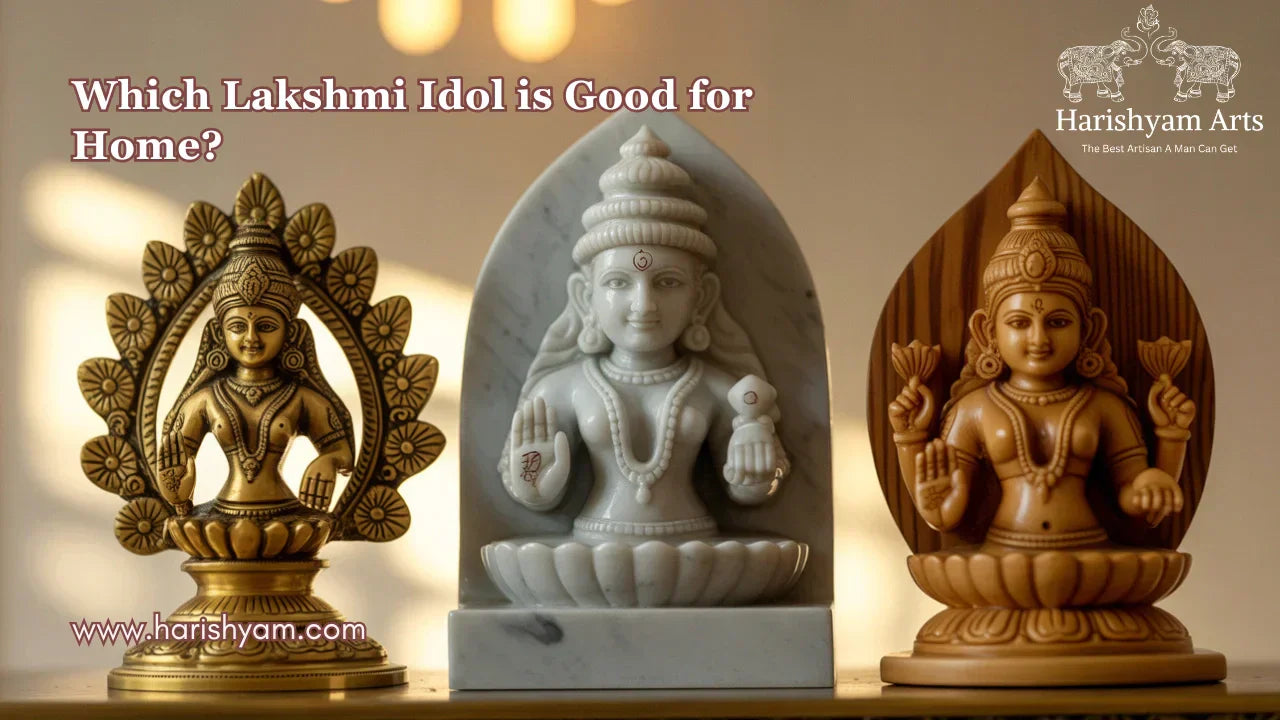
Which Lakshmi Idol is Good for Home? Types, Materials, and Significance
Lakshay Sharma | October 11, 2025
Goddess Lakshmi, the divine symbol of wealth, prosperity, and abu...
Read More...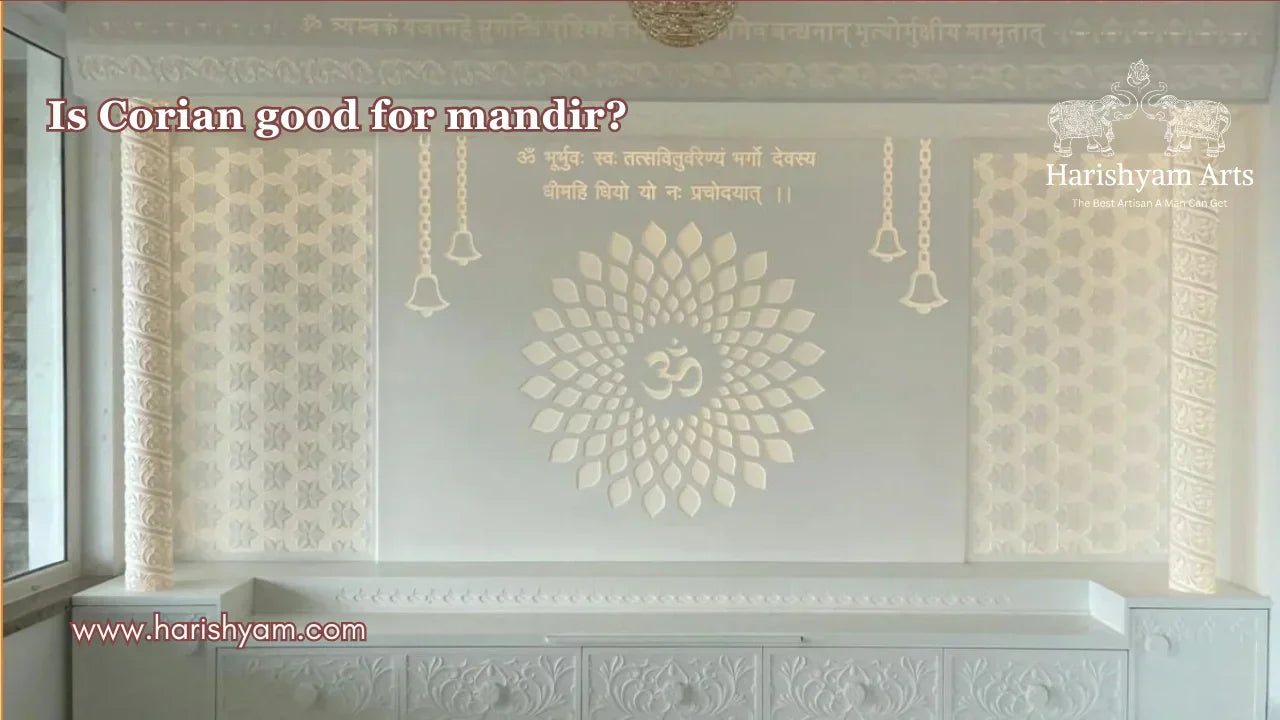
Is Corian Good for Mandir? A Complete Guide
Lakshay Sharma | October 10, 2025
When it comes to designing a home mandir, choosing t...
Read More...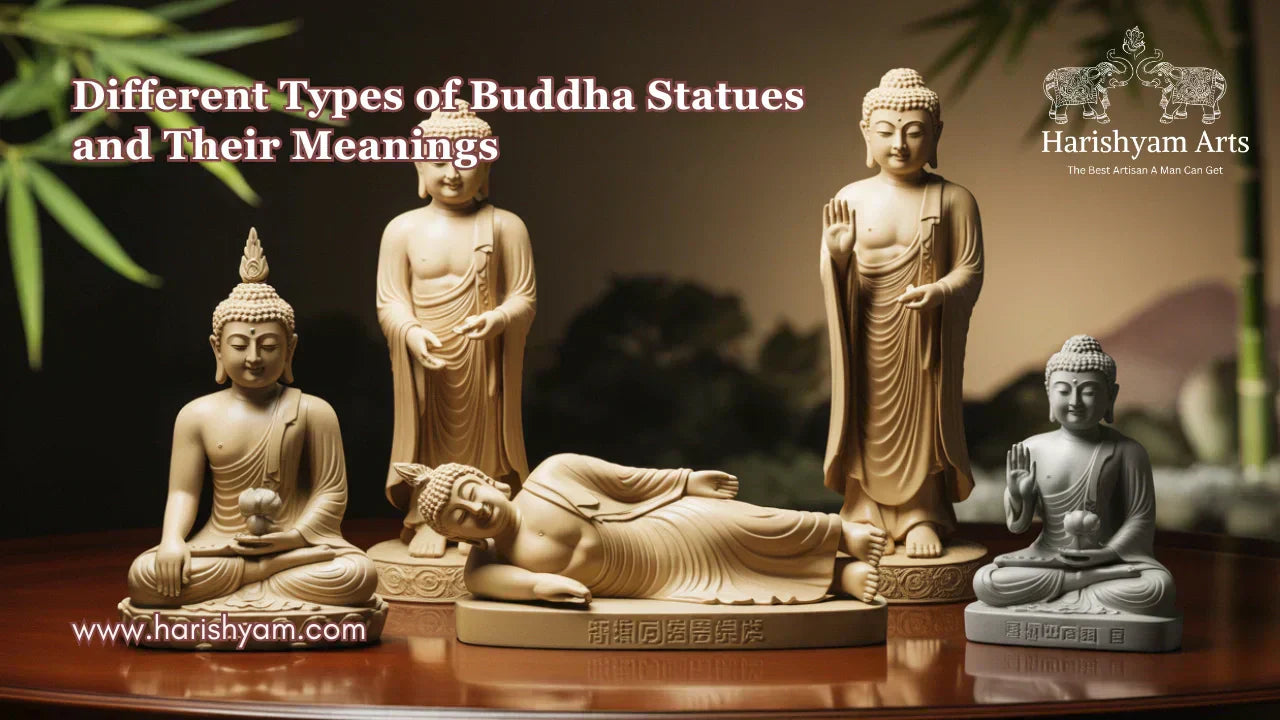
Different Types of Buddha Statues and Their Meanings
Lakshay Sharma | October 09, 2025
Buddha statues are more than just beautiful decorative pieces—they symbolize s...
Read More...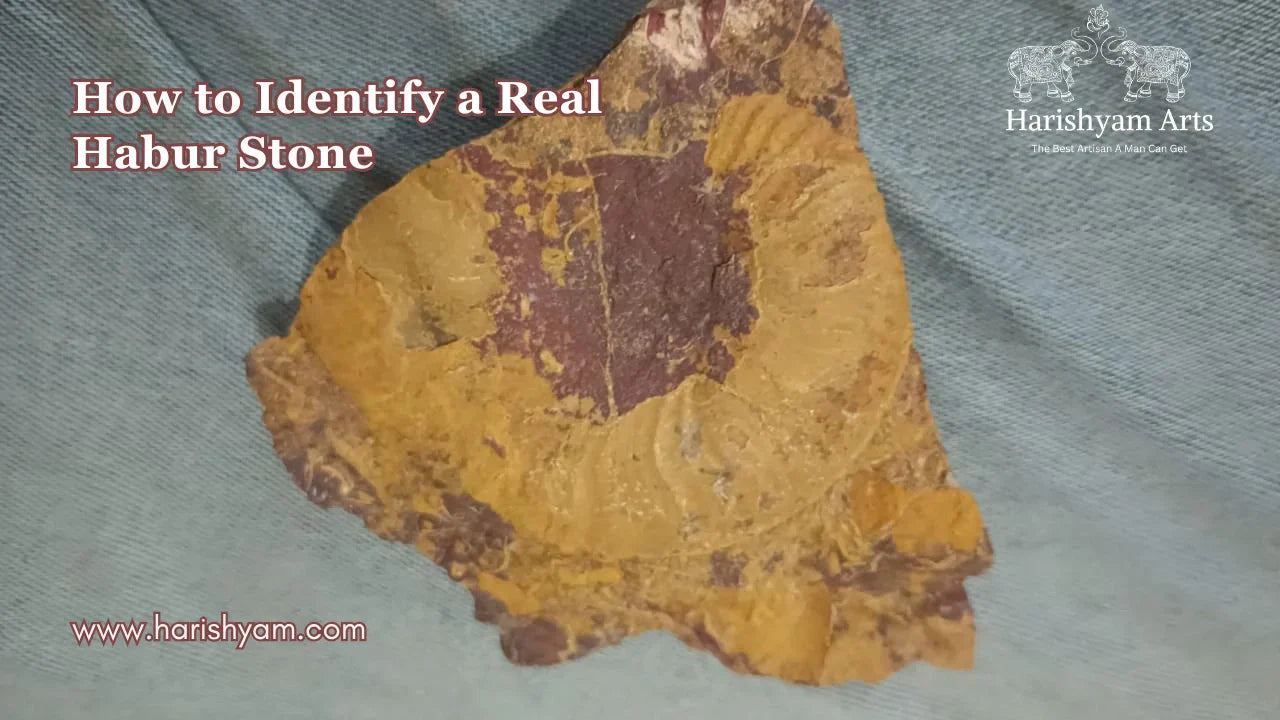
How to Identify a Real Habur Stone? A Complete Guide
Lakshay Sharma | October 08, 2025
Habur stone, known for its mysterious ability to turn milk into curd naturally...
Read More...
How long does Marble Statues Last?
Lakshay Sharma | October 06, 2025
Marble statues can last for centuries, or even thousands of years...
Read More...
Which Wood is Best for Home Mandir?
Lakshay Sharma | October 05, 2025
A home mandir is not just a piece of furniture; it is the spiritual heart of y...
Read More...
How to Choose a Krishna Idol for Your Home
Lakshay Sharma | October 04, 2025
Choosing the perfect Krishna idol for your home is more than just selecting a ...
Read More...
Interesting Facts About Maa Kali Statue
Lakshay Sharma | October 02, 2025
Introduction
Among the many divine forms of Go...
Read More...
Bhai Dooj 2025: Date, Rituals, and Cultural Significance Across India
Lakshay Sharma | October 01, 2025
Bhai Dooj, also known as Bhaiya Dooj, Bhai Tika, or Bhau Beej Read More...

Why Do We Celebrate Govardhan & How to Do Govardhan Puja at Home
Lakshay Sharma | October 01, 2025
The story of Govardhan is linked to Lord Krishna’s childhood in Vrindavan. The...
Read More...
Dussehra (Vijayadashami) 2025: History, Story, Significance, Puja Rituals and Celebrations
Lakshay Sharma | September 26, 2025
India is often called the land of festivals, where every celebration carries d...
Read More...
2025’s Best Antique & Luxury Brass Door Designs for Homes
Lakshay Sharma | September 02, 2025
Brass doors have always been a symbol of strength, elegance, and heritage. In ...
Read More...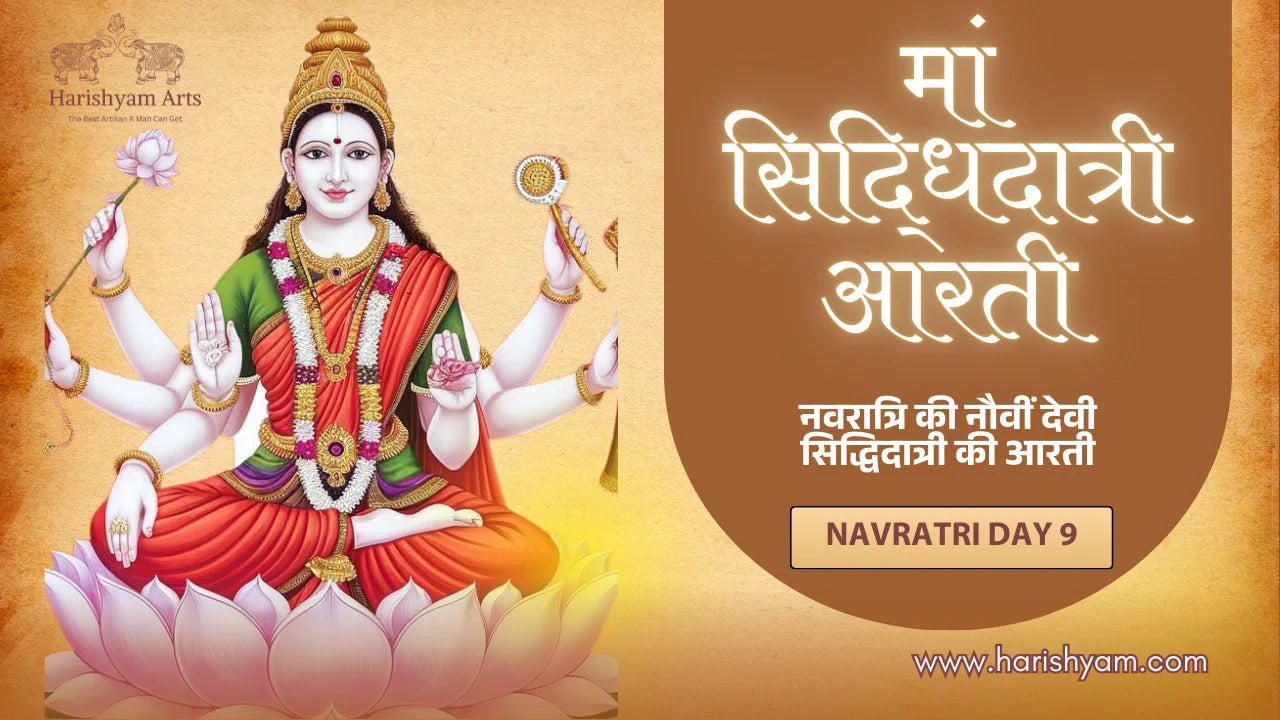
Navratri Day 9 – Maa Siddhidatri Aarti Lyrics
Lakshay Sharma | September 01, 2025
नवरात्रि के नौवें दिन की देवी हैं मां स...
Read More...



